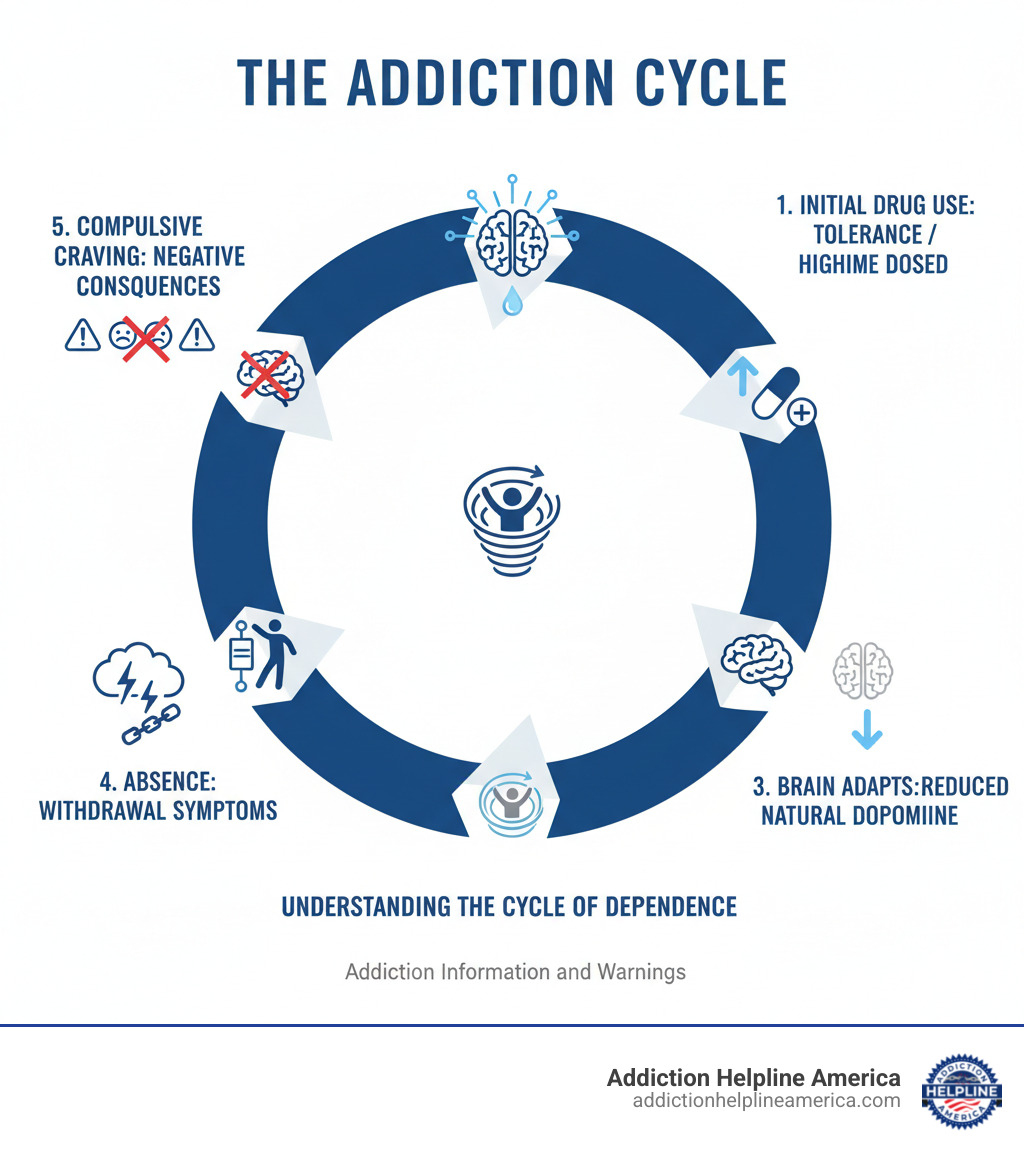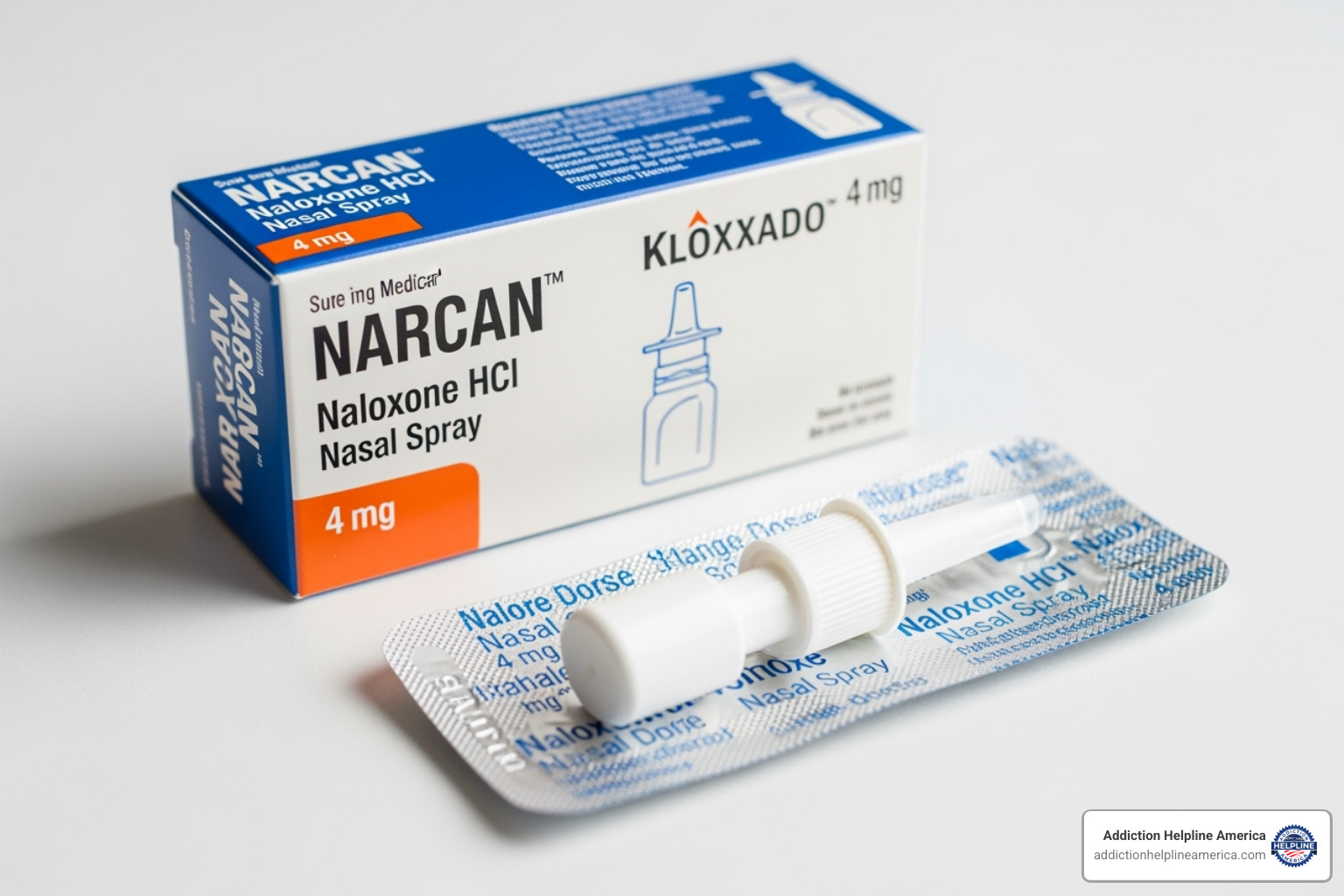Your Journey to a Healthier Life Starts Here
Free Insurance Verification
Verify Your Treatment Coverage
Verify Your Treatment Coverage
Addiction Information and Warnings are vital for recognizing a substance use problem before it becomes life-threatening. Understanding the signs can save a life.
Key Warning Signs to Watch For:
Critical Facts:
Addiction is not a matter of willpower. It physically changes the brain’s reward system, making it incredibly difficult to stop using. This rewiring drives compulsive drug-seeking behavior despite devastating consequences.
At Addiction Helpline America, we help people steer the complexities of Addiction Information and Warnings. We connect individuals and families with treatment resources and provide the confidential support they need, because we know that early recognition saves lives.

Addiction Information and Warnings are about understanding the science of what happens inside the brain. Addiction is a disease that rewires the brain’s reward circuit; it is not a sign of weakness or a moral failing.
When someone uses drugs, most substances trigger a massive flood of dopamine, the chemical of pleasure and motivation. This release can be up to ten times higher than natural rewards, teaching the brain to repeat the behavior. With repeated use, the brain adapts by reducing its own dopamine production and receptors. This is tolerance development—the person needs larger doses to feel the same high.
As a result, everyday pleasures feel less rewarding. The drug becomes the only thing that seems to activate the brain’s reward system, driving compulsive drug-seeking behavior.
Addiction also damages brain areas responsible for judgment, decision-making, and impulse control. The prefrontal cortex becomes impaired, which explains why someone who wants to quit finds themselves unable to resist using again, despite the consequences. What begins as a choice transforms into a chronic brain disease. You can learn more about how substances change the brain through scientific research on the science of addiction.
Not everyone who tries drugs develops an addiction, but certain factors increase the risk. Think of these as warning lights that signal a need for closer attention.
Recognizing these risk factors helps us understand who needs extra support. At Addiction Helpline America, we use this knowledge to connect people with prevention resources and treatment options custom to their unique circumstances.
When someone is struggling with substance use, their body and behavior send signals. Learning to recognize these Addiction Information and Warnings can lead to early intervention. Look for patterns of change, not just isolated incidents.

Take the first step towards a healthier life! Call now to connect with our compassionate team and start your recovery journey today. Your path to healing awaits!
Our recovery specialists are available 24/7 to provide support, and all calls are confidential and free. Reach out anytime – we’re here to help!

Finding items used for consuming drugs is a concrete and urgent warning sign. These include:
Finding these items means professional help is urgently needed. At Addiction Helpline America, we can guide you toward the right resources, no matter the situation.
Different substances have unique warning signs and risks. Understanding them helps identify the specific dangers a person may be facing.
Because it’s legal and socially accepted, alcohol’s dangers are often underestimated.
This class of drugs includes heroin, synthetic opioids like fentanyl, and prescription painkillers (e.g., oxycodone). They are highly addictive and carry a high risk of fatal overdose.

This category includes cocaine, meth, and prescription drugs like Adderall and Ritalin. They increase alertness and energy but can lead to severe addiction.
Addiction Helpline America provides confidential guidance for any substance, connecting you to the right treatment resources.
Understanding Addiction Information and Warnings is the first step. Taking action is the next.


Take the first step towards a healthier life! Call now to connect with our compassionate team and start your recovery journey today. Your path to healing awaits!
Our recovery specialists are available 24/7 to provide support, and all calls are confidential and free. Reach out anytime – we’re here to help!
Stigmatizing language creates barriers to recovery. Using person-first language acknowledges a person’s humanity beyond their disease.
We talk about “remission” rather than being “cured,” because addiction is a chronic condition requiring ongoing management. These small shifts create a more compassionate environment. For more guidance, see the NIDA guide on stigma-reducing language.
Recovery requires professional support. If substance use is causing serious consequences, it’s time to seek help.
Talking to a loved one: Choose a calm, sober moment. Use “I” statements (“I’m worried about you”) instead of accusations. Be prepared with treatment information, and listen without judgment.
Types of Treatment:
At Addiction Helpline America, our team provides free, confidential guidance to help you find the right program from our network of providers. You don’t have to do this alone.
Here are answers to common questions about Addiction Information and Warnings.
Understanding this distinction is key.
Addiction is a chronic disease, much like diabetes or heart disease. It cannot be “cured” in the sense that it disappears forever, but it can be managed successfully through long-term recovery.
The goal of treatment is to manage the disease, prevent relapse, and help the person build a fulfilling life. Relapse is not a sign of failure; it’s a sign that the treatment plan may need to be adjusted, just as it would be for any other chronic illness. With evidence-based treatment and ongoing support, people can achieve sustained remission and lead healthy, productive lives.
Watching a loved one struggle is painful. Here are steps you can take to help effectively:
You cannot force someone into recovery, but you can be a powerful source of support and guidance when they are ready.
Understanding Addiction Information and Warnings is a crucial first step. If you recognize these signs in yourself or someone you love, know that help is available and recovery is possible.
Addiction is a treatable disease, not a character flaw. You do not have to face it alone.
At Addiction Helpline America, we provide a free, confidential service to connect you with a trusted treatment center from our nationwide network. Our team listens without judgment and guides you to a recovery program that fits your unique needs.
Making the first call is often the hardest part, but it’s a moment of courage that can change everything. You deserve support, healing, and a chance to reclaim your life.
Are you or a loved one struggling with addiction? Call today to speak to a treatment expert.
Calls to any general helpline will be answered or returned by one of the treatment providers listed, each of which is a paid advertiser:
Our helpline is available 24 hours a day, 7 days a week at no cost to you and with no obligation for you to enter into treatment. We are committed to providing support and guidance whenever you need it.
In some cases, Addiction Helpline America charges our verified partner a modest cost per call. This fee helps us cover the costs of building and maintaining our website, ensuring that we can continue to offer this valuable service to those in need.
Calls to the general helpline will be answered or returned by one of the listed treatment providers, all of whom are paid advertisers.
By using the helpline, you agree to the terms of use. We do not earn any commission or fee based on the treatment provider selected by the caller, and there is no obligation to pursue treatment.
This service is not affiliated with Alcoholics Anonymous World Services, Inc.